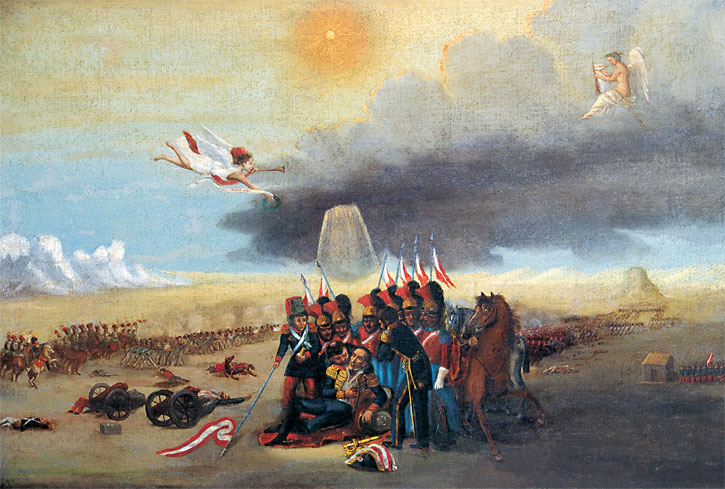|
Peruvian-Bolivian War Of 1841-1842
The Peruvian-Bolivian War was a warlike confrontation between Peru and Bolivia in the years 1841 and 1842. In 1841, Agustín Gamarra, President of Peru, tried to annex Bolivia (the former colonial Charcas Audience), which cost the Peruvian president his life on November 18, 1841 at the Battle of Ingavi. The Bolivian Army, under the command of General José Ballivián, occupied the Peruvian provinces of Moquegua, Puno, Tarapacá, Tacna and Arica. The eviction of Bolivian troops in southern Peru would be achieved by the increased availability of material and human resources in Peru. At the end of the war, the Treaty of Puno was signed on June 7, 1842. Occupation of La Paz Peruvian troops led by President Gamarra began the march to Bolivia on October 1, 1841, crossing the border the next day. After advancing without encountering resistance, on October 15 they entered La Paz without fighting. Ballivián's manifesto to oppose the invaders, however, was soon applied by the population. ... [...More Info...] [...Related Items...] OR: [Wikipedia] [Google] [Baidu] |
Battle Of Ingavi
The Battle of Ingavi occurred on November 18, 1841, during the Peruvian-Bolivian War of 1841-1842, in the town of Ingavi, Bolivia. The Bolivian Army, commanded by Jose Ballivian, there met an invading Peruvian Army commanded by Agustín Gamarra, who later died during the battle. Background With the dissolution of the Peru-Bolivian Confederation, Peruvian President Agustín Gamarra, made the controversial decision to invade Bolivia and used the political chaos occurring in the Bolivian government as an excuse. Gamarra had from the beginning supported a union between Peru and Bolivia but preferred it to be completely dominated by the Peruvian government, rather than being a confederation between the two nations. Immediately, [...More Info...] [...Related Items...] OR: [Wikipedia] [Google] [Baidu] |
